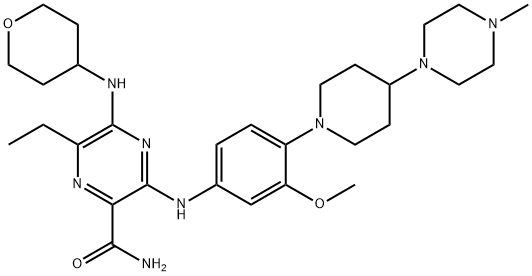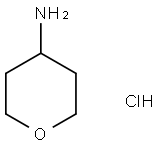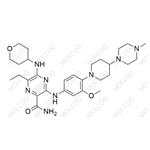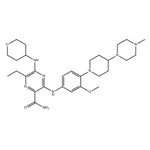Physical Form
Pale-yellow to Yellow-brown Solid
in vivo
In vivo, gilteritinib is distributed at high levels in xenografted tumors after oral administration. The decreased FLT3 activity and high intratumor distribution of gilteritinib translates to tumor regression and improved survival in xenograft and intra-bone marrow transplantation models of FLT3-driven AML. This antitumor activity is associated with a durable inhibition of phospho-FLT3 and phospho-STAT5. Furthermore, treatment with gilteritinib decreases the leukemic burden and prolongs survival in a mouse IBMT model. No overt toxicity is seen in mouse models treated with gilteritinib
Description
Gilteritinib is an inhibitor of FMS-related tyrosine kinase 3 (FLT3; IC
50 = 5 nM for the wild-type enzyme). It inhibits mutant forms of FLT3, including FLT3 with the internal tandem duplication mutation (FLT3-ITD), FLT3-ITD expressing the F691L mutation, and FLT3 with various tyrosine kinase domain mutations (FLT3-TKD; IC
50s =1.4-1.8, 12.2, and 0.7-2 nM, respectively). Gilteritinib also inhibits Axl and c-Kit with IC
50 values of 41 and 102 nM, respectively. It decreases the viability of blast cells isolated from patients with relapsed acute myeloid leukemia (AML) in a concentration-dependent manner. Formulations containing gilteritinib have been used in the treatment of AML.
Uses
Gilteritinib is an AXL inhibitor in cancer.
Definition
ChEBI: Gilteritinib is a member of the class of pyrazines that is pyrazine-2-carboxamide which is substituted by {3-methoxy-4-[4-(4-methylpiperazin-1-yl)piperidin-1-yl]phenyl}nitrilo, (oxan-4-yl)nitrilo and ethyl groups at positions 3,5 and 6, respectively. It is a potent inhibitor of FLT3 and AXL tyrosine kinase receptors (IC50 = 0.29 nM and 0.73 nM, respectively). Approved by the FDA for the treatment of acute myeloid leukemia in patients who have a FLT3 gene mutation. It has a role as an apoptosis inducer, an EC 2.7.10.1 (receptor protein-tyrosine kinase) inhibitor and an antineoplastic agent. It is a N-methylpiperazine, a member of piperidines, a secondary amino compound, a monomethoxybenzene, a member of pyrazines, a primary carboxamide, an aromatic amine and a member of oxanes.
General Description
Class: receptor tyrosine kinase;
Treatment: AML, SM;
Other name: ASP-2215;
Oral bioavailability > 61%;
Elimination half-life = 113 h;
Protein binding = 94%
References
Lee et al. (2017) Preclinical studies of gilteritinib, a next-generation FLT3 inhibitor; Blood?129 257
Thomas et al. (2021) Gilteritinib Inhibits Glutamine Uptake and Utilization in FLT-3-ITD-Positive AML; Cancer Ther.?20 2207





